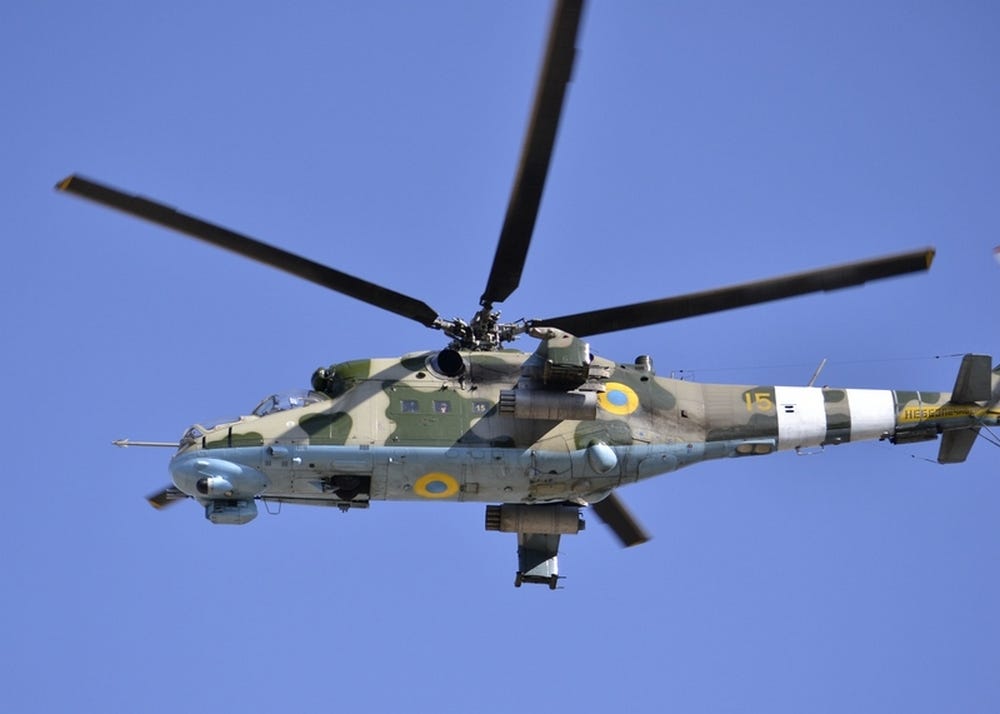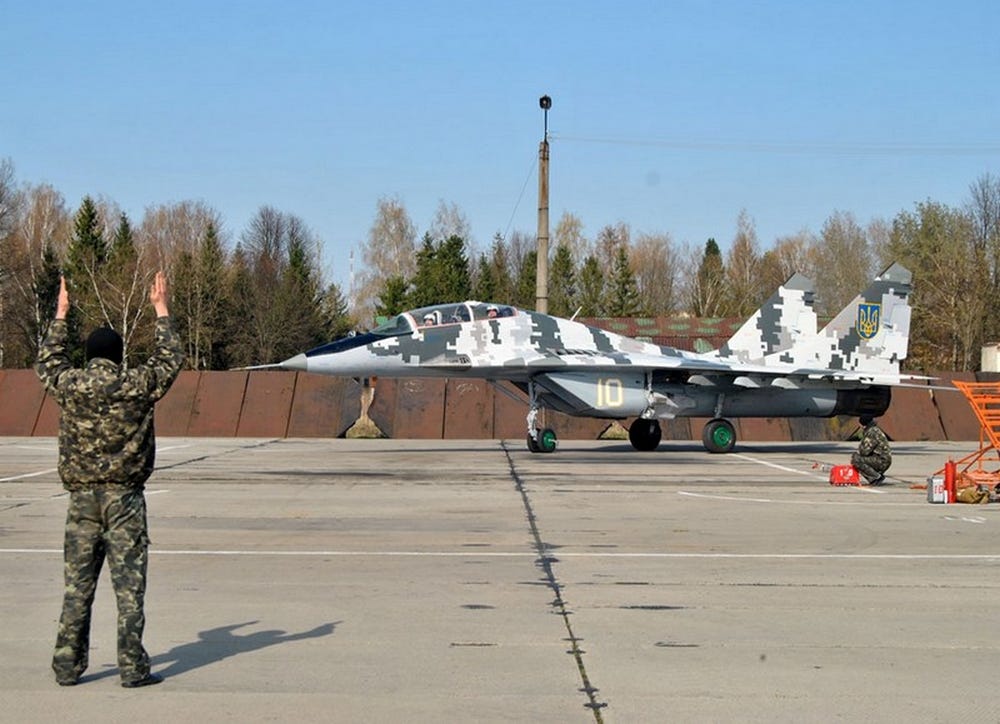David Axe in War is Boring
On March 22, a Russian armored vehicle smashed through the gate of the Belbek air base in Crimea. Swarming into the Ukrainian air force facility, Russian troops quickly seized as many as 45 MiG-29 fighter jets, representing around half of the MiG-29s in Ukrainian service—and nearly 10 percent of Kiev’s entire aerial arsenal.
But losing so many of its warplanes has helped motivate Ukraine to repair the jets it still has. On April 4, the Ukrainian Defense Ministry announced that its technicians had restored “several” mothballed MiG-29s at an air base near Kiev. “Soon, we’ll put into operation some more aircraft which were stored,” an air force officer vowed.
It’s possible that the Russian invasion could have the surprising effect of actually saving Kiev’s air force. Absent a clear threat, the once-mighty air arm was rusting away. Now Kiev’s state factories are restoring grounded planes—and could restart suspended upgrade programs that promise to transform Soviet-era equipment.
Ukrainian MiG-29 in April. Ukrainian Defense Ministry photo
Grounded
Ukraine suffered a devastating blow in late February and March when tens of thousands of Russian troops swept across the strategic Crimean peninsula, seizing military bases and equipment and evicting thousands of Ukrainian personnel. Thousands more Ukrainian troops defected to the Russian side.
Impoverished and mismanaged during the rule of pro-Russian president Viktor Yanukovych—whose February ouster following a popular uprising motivated Moscow to invade—the Ukrainian armed forces were in no condition to mount a determined defense.
On paper, Kiev’s air force possessed an impressive line-up of 507 Soviet-designed warplanes and 121 armed helicopters, including 42 Su-27 and 80 MiG-29 fighters, 143 Su-24 and 46 Su-25 ground-attack aircraft and 48 Mi-24 gunship helicopters.
But in reality, most of the aircraft were in terrible material condition, having been idle for months, years or even decades. Just 16 Su-27s, 24 MiG-29s, 35 Su-24s and 24 Su-25s were flightworthy at the time of the Russian annexation. It’s unclear how many of the MiG-29s the Russian seized at Belbek were flyable.
A post-invasion survey found that, overall, just 15 percent of the air force’s planes were combat-ready—a figure that former defense minister Ihor Tenyukh, who resigned in March, declared “unsatisfactory.” While Russians were still on the move in Crimea, modernized Ukrainian Su-27s began flying heavily-armed combat air patrols in the central part of the country.
 And Kiev moved quickly to prepare other planes for war. On April 4, the air force flew 160 training sorties in a single day for a total of 148 hours of flying time. “These drills contribute much to enhancement of the personnel flying skills,” the Defense Ministry announced.
And Kiev moved quickly to prepare other planes for war. On April 4, the air force flew 160 training sorties in a single day for a total of 148 hours of flying time. “These drills contribute much to enhancement of the personnel flying skills,” the Defense Ministry announced.
Ukrainian Mi-24 in April. Ukrainian Defense Ministry photo
Industrious
As part of the Soviet Union, Ukraine was a center of aerospace engineering and manufacturing. Achieving independence in 1991, Ukraine inherited hundreds of Soviet warplanes and all the industry on its soil. Kiev remains a major aerospace exporter—and until the Crimean annexation, Moscow was one of its biggest customers.
Fortunately for Ukraine, very few of its airplane plants were in Crimea. Russia now controls the peninsula’s Yevpatoria factory, which maintained the Ukrainian navy’s small force of helicopters and flying boats. But facilities for repairing and upgrading jet fighters and producing air-to-air missiles are firmly under Kiev’s control in the country’s north.
They include the Aviakon plant in northwest Ukraine, which overhauls transport and attack helicopters. The MiGremont facility in eastern Ukraine can rebuilds and upgrade almost all Soviet-type jets, including Su-27s and Su-25s. The Lviv State Aviation Maintenance Plant in the west repairs and enhances MiG-29s. Artem in Kiev license-builds Soviet R-27 air-to-air missiles plus indigenous models.
Between them, these companies have developed a wide range of upgrades for Ukraine’s warplanes. The MiG-29M1, the first few copies of which appeared in late 2012, boasts GPS navigation, enhanced radios and a radar with improved detection range. Since 2012 the air force has also received at least 10 Su-25M1s with new avionics plus several Su-27M1s with GPS, improved weapons control and the ability to deploy air-to-ground ordnance.
These upgrade programs have stalled. Continuing them could cost tens of millions of dollars—and it’s not clear that Kiev can afford that. But if the government can find the cash, it could transform a dilapidated air arm into a modern fighting force. The airframes are already on hand. The factories are ready.
And with Russian troops in Crimea and Ukrainian airmen preparing for battle, the need is obvious.
David Axe’s new book Shadow Wars is out. Sign up for a daily War is Boring email update here. Subscribe to WIB’s RSS feed here and follow the main pagehere.

No comments:
Post a Comment